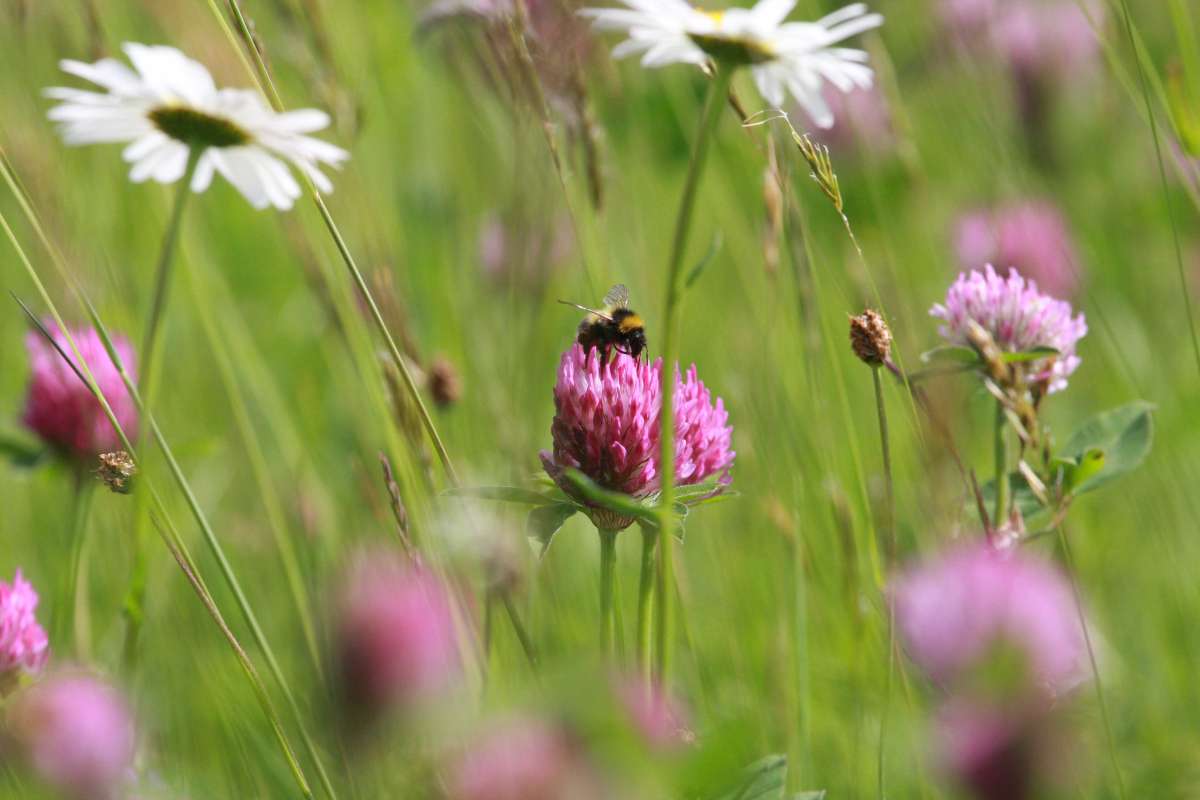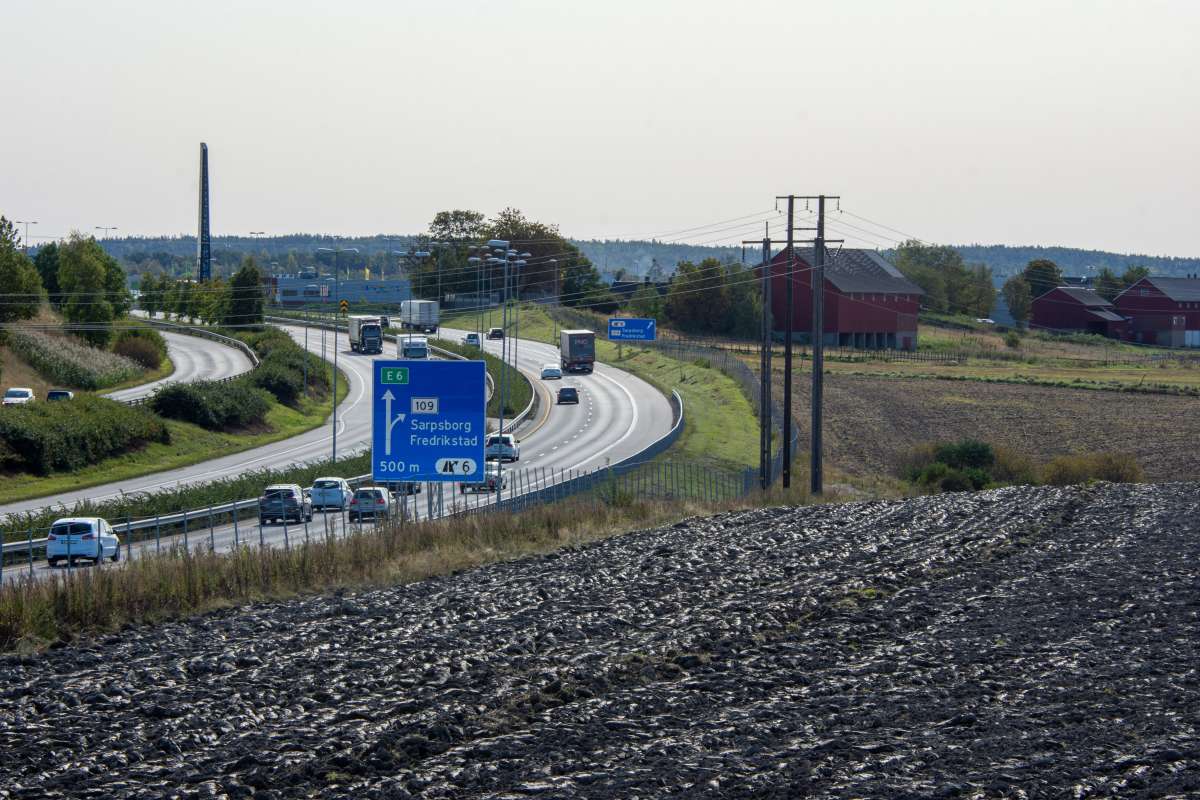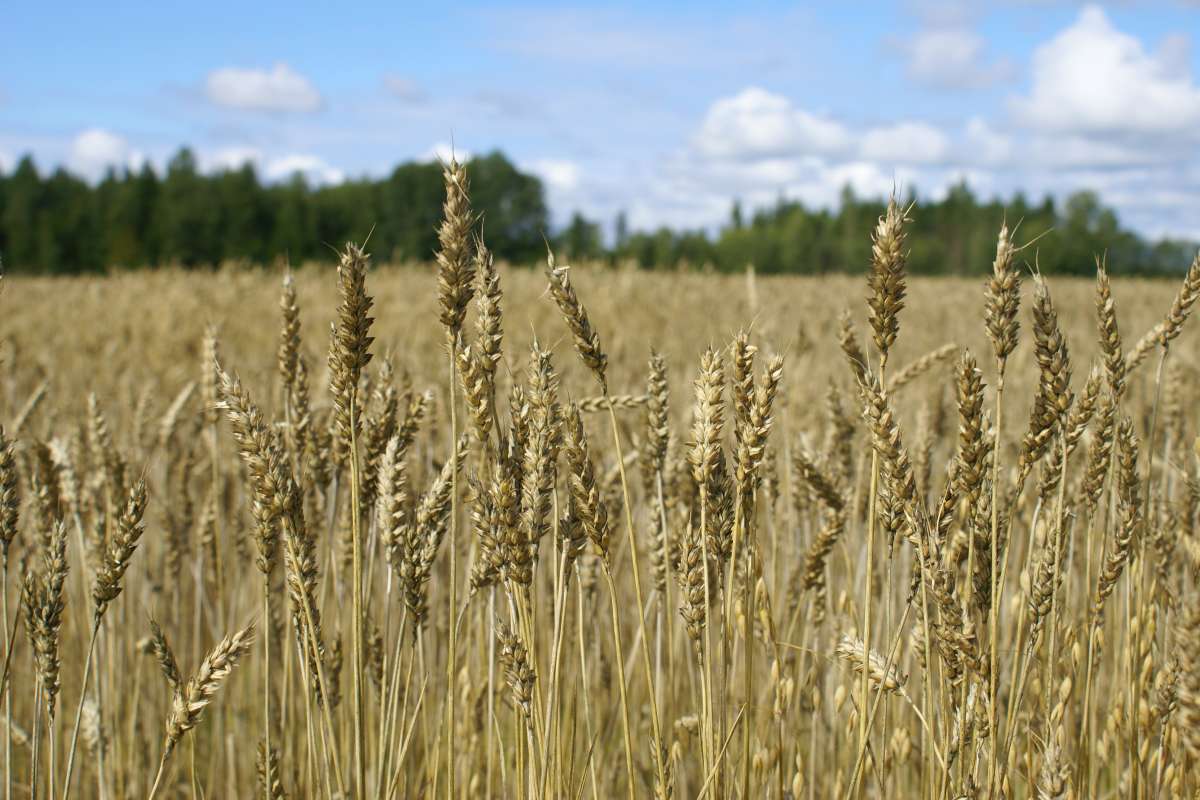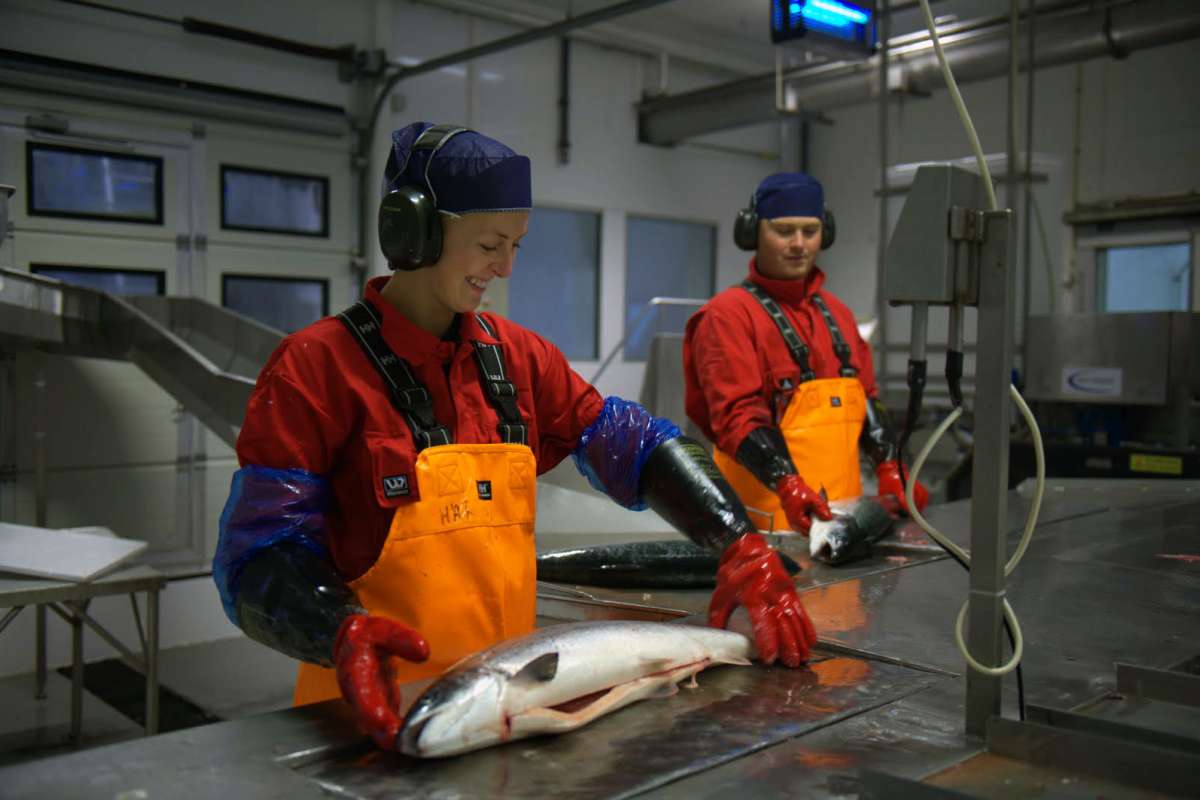How much do Norwegian farmers earn?
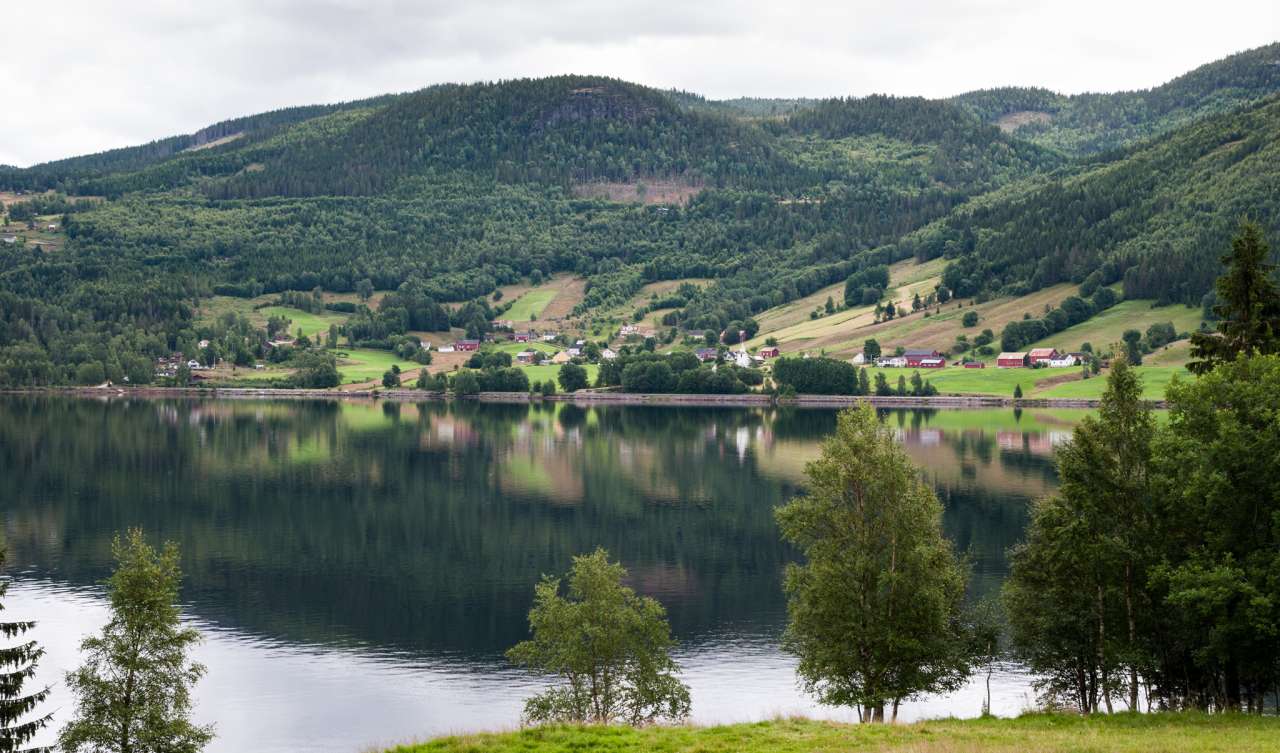
In 2023 the average income for farmers in Norway was a little more than 400,000 NOK. But behind this number exists great variety. Photo: Dan Aamlid
In Norway, every April, a special event takes place - the yearly negotiations between the farmer organizations and the state. In 2024 there has been a special focus on farmer income and the gap between farmer income and average national income. In 2023 the average income for farmers in Norway was a little more than 400,000 NOK. But behind this number exists great variety.
In April of this year, the Budget Committee for Agriculture in Norway released the Total Calculation for Agriculture. The Total Calculation is a national account that provides figures for the entire agricultural sector. Based on these numbers, the average farmer had an income per full-time equivalent of just over 400,000 NOK in 2023. However, this average figure doesn’t tell us much about what Norwegian farmers truly earn. When we delve into the agricultural statistics from Statistics Norway (SSB) or look at account statistics for agriculture and forestry from the Norwegian Institute of Bioeconomy Research’s (NIBIO), it becomes clear that the difference between the lowest and highest income levels among farmers is substantial.
To gain a deeper understanding, we will examine the numbers behind the numbers. But first, let’s start with some basic knowledge about Norwegian agriculture and its economy. If you continue reading, you’ll become one of the very few who understand something about farmers’ income in Norway and the key reasons for the significant disparities.
.jpg)
Norwegian agriculture in a nutshell
In 2023, there were 37,561 agricultural enterprises in Norway.
Some counties have significantly more farms than others.
Viken, Innlandet, Trøndelag, and Vestland are the counties with the most agricultural enterprises. Vestland stands out because its average farm size is significantly smaller than in the other three counties with many farms. In Northern Norway, there are fewer farms, but the average farm size is comparable to that of the larger agricultural counties.
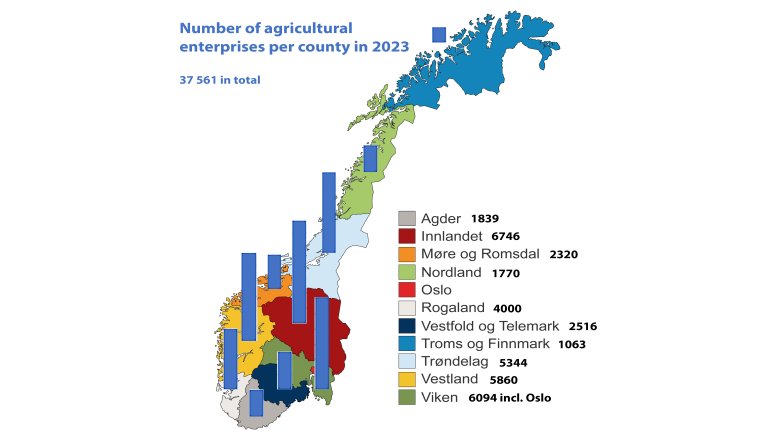
Vestland and Agder have considerably smaller average farm sizes than other counties in the country.
These differences are closely related to the landscape. In Agder, fields are scattered among hillocks and small mountains. In Vestland, there are also many small fields between fjords, lakes, rivers, and high mountains.
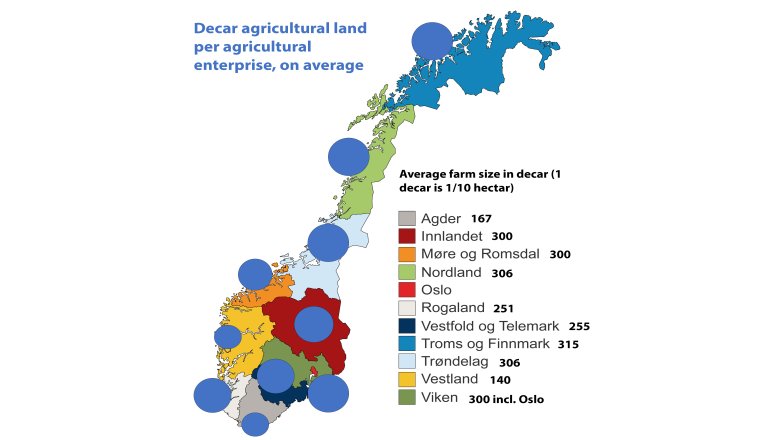
Norwegian agriculture covers a wide range of productions, from vegetables and berries to milk, eggs, and meat. Most of the land is used for animal husbandry with grain and grass production for feed manufacturing.
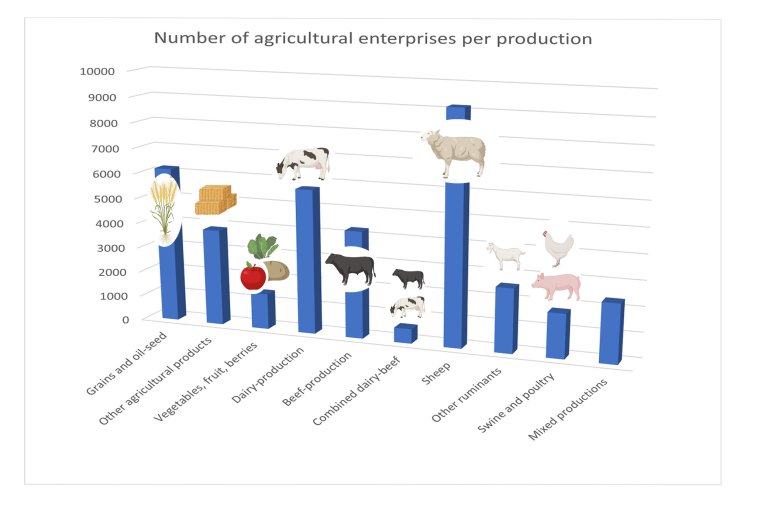
Income and costs
Norwegian farmers are self-employed entrepreneurs, not salaried employees. According to SSB, there were 37,561 agricultural enterprises in Norway in 2023. Most of these are sole proprietorships, meaning the business is owned by an individual and operated at their own risk. When we discuss a farmer’s income, we do not refer to a salary, but to the economic results from farming enterprises after deducting costs. In addition to this, most Norwegian farmers have either a salary from paid employment or income from other industries.
Farm income comes from product and service sales, as well as subsidies from the state. There’s significant variation in what Norwegian farmers produce, and some types of production yield higher profits than others. We’ll explore this shortly.
To produce, farmers invest time and money in the form of labour and capital. In addition to land, forests, and livestock, farmers have costs related to buildings, machinery, seeds, animal feed, fuel, interest, and more. The size of these costs depends on the type of production and farming system. A large farm can have costs totalling several million Norwegian kroner (NOK) per year.
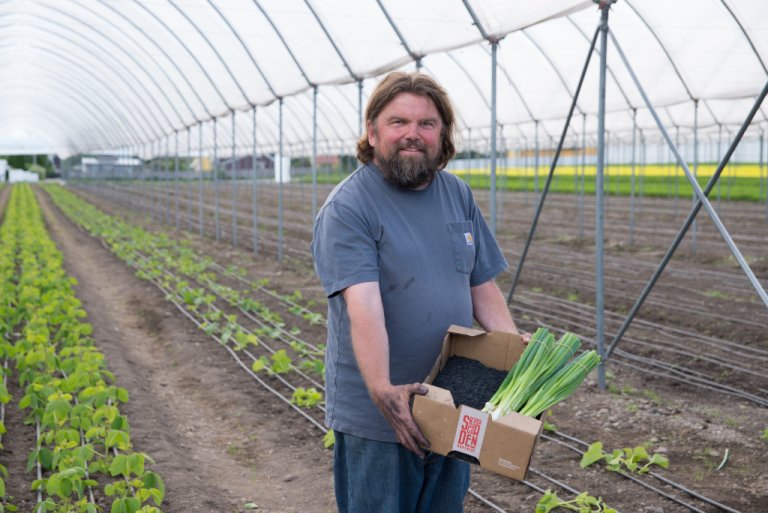
Government governance
The yearly negotiations between the agricultural organizations and the government in April, are not about salary settlement. Farmers do not receive salaries from the state. However, the state aims to create income opportunities for farmers.
Agricultural enterprises are more dependent on state decisions than other businesses. The state regulates prices for agricultural products, manages tariff protection, and determines the size of various subsidies. The state also sets requirements related to environmental and animal welfare standards. All of this can result in significant costs due to extensive operational adjustments for farmers.
Over the past three years, there has been a substantial increase in costs that both farmers and the general population have felt. This was the main reason for increased government support to farmers in 2022 and 2023. Additionally, the government committed to closing the income gap between agriculture and other societal groups. By spring 2024, the government decided to bridge this income gap by 2027.
These are some of the reasons why farmer income has received more attention lately. So, let’s take a deeper look into the significant variation in farmers’ income. Data from Statistics Norway (SSB) and NIBIO’s account statistics for agriculture can provide deeper insights into this income mystery. We’ll start with figures from SSB.
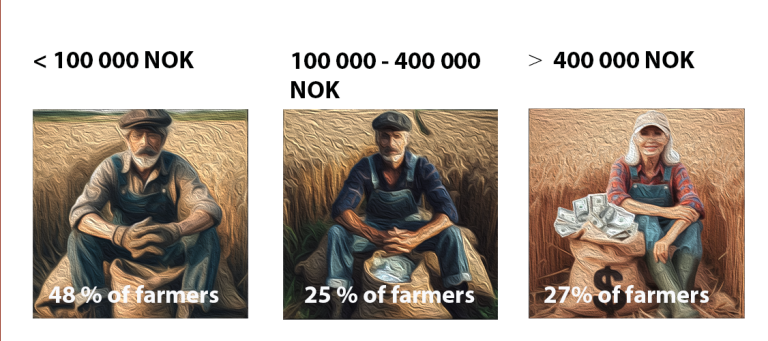
Nearly half of Norwegian farmers had agricultural income below 100,000 NOK in 2022. Four out of ten farmers received less than 10% of their total income from agriculture. These are known as part-time farmers. One point of contention in the debate about farmers’ income is whether all part-time farmers should be included when assessing the income level of Norwegian farmers.
A crucial reason for the prevalence of part-time farming is that many farms are small. The average agricultural area per farm in Norway is 26,2 hectares, while in Denmark, it’s 79 hectares.
_ENG.png)
Insights from account statistics for agriculture
There’s significant variation between different regions and production types. Additionally, there are substantial differences between individual farms. We gain the best understanding of this variation through data from account statistics for agriculture.
NIBIO conducts these accounting surveys, involving over 900 farms. The selected farms are representative of the industry and must have a turnover of at least 150,000 NOK.
All income figures we’ll present from this survey are converted to full-time equivalents. If a farmer works more or less than one full-time equivalent on the farm, their income is adjusted accordingly. For example, if a farmer works 300 hours (equivalent to seven and a half weeks) on the farm and earns 150,000 NOK, their full-time equivalent income would be reported as 925,000 NOK (calculated based on a full-time equivalent of 1845 hours per year).
Understanding income variations in grain production
Each dot on the graph below represents income converted to full-time equivalent for a single grain farm. Interestingly, there’s little correlation between farm size and the return on labour and investments in grain production.
In Norway there are many small-scale grain farmers who dedicate relatively little time to this production.
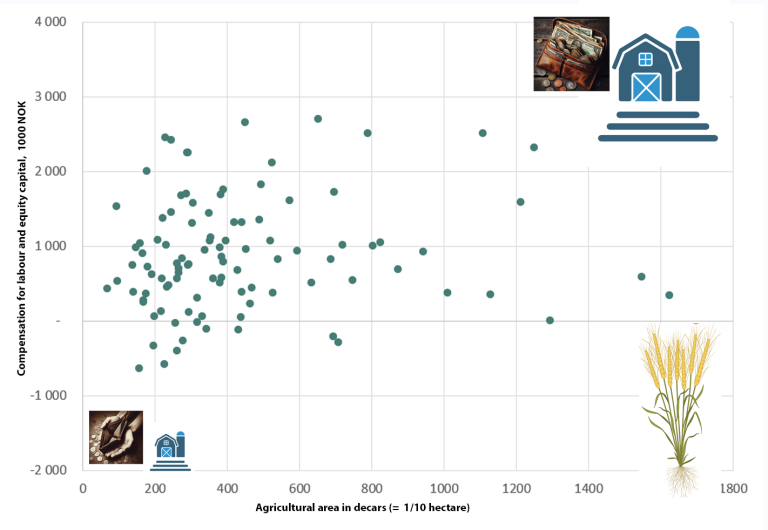
However, all the numbers on the graph are scaled up to a full-time equivalent for comparability.
Several factors contribute to the variability in agricultural economics:
Significant investments, such as purchasing new harvesters or grain dryers, can impact profits. Farmers who have paid off debt and avoided major investments over an extended period often see higher profits. Climate and soil quality significantly affect crop yields. The ability to implement appropriate measures at the right time is also important.
Different grain varieties yield varying payments. High-quality grain commands better prices. Crop yields can vary significantly from year to year. For instance, the graph shows results from 2022—a year favourable for grain yields in the south-east of Norway, but less so in Trøndelag.
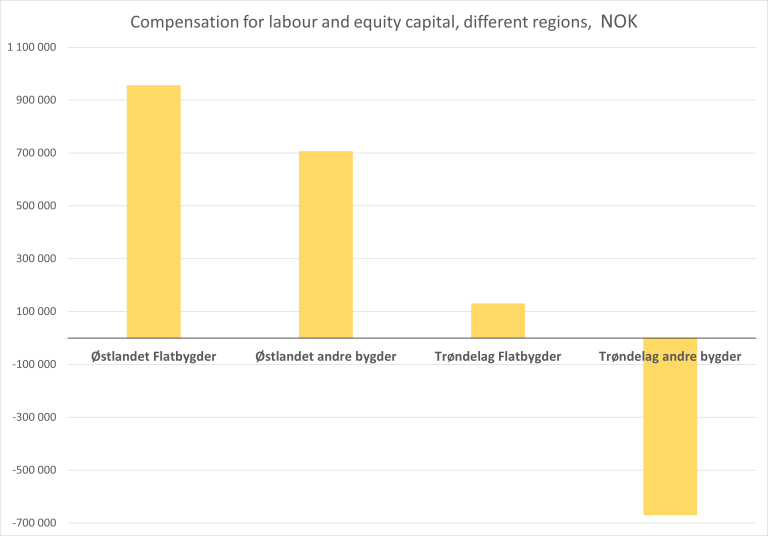
Income variability in dairy farming
As for grain farmers, there is no strong correlation between the size of the dairy farm (number of dairy cows) and the economic result. Most dairy farmers derive a substantial portion of their income from dairy farming, and there are more full-time farmers among them than among grain producers. The variations in income share many of the same causes as those observed in grain production.
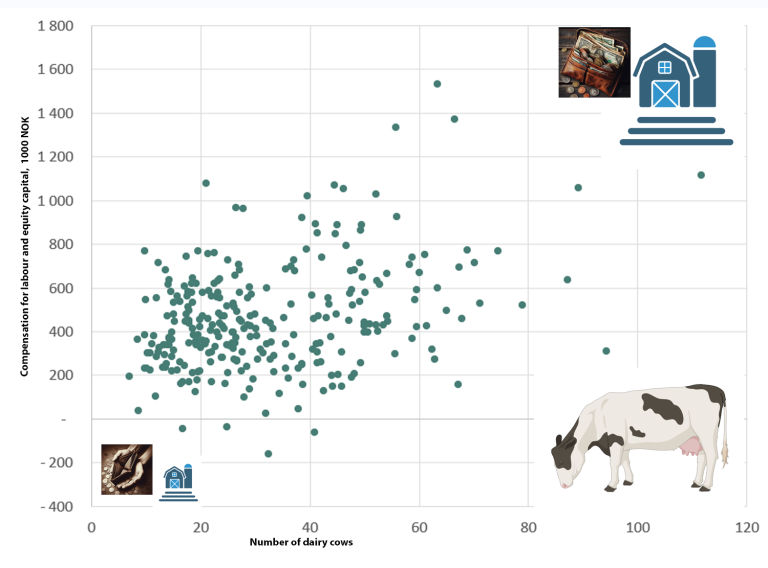
Additionally, dairy production requires larger investments than many other agricultural activities. The graph shows that dairy farmers often have more debt. One reason for this is the high cost of dairy cow barns. In recent years, many dairy farmers have adopted milking robots to streamline operations and provide more flexible working hours for themselves. By 2034, all dairy farmers without loose housing barns must either renovate or build new facilities. Many smaller dairy producers do not plan to continue beyond 2034 because their production isn’t large enough to cover these costs.
Geography also plays a role in dairy production. In areas with livestock, there are more farmers with scattered fields who spend considerable time spreading manure and mowing grass compared to those with large contiguous areas.
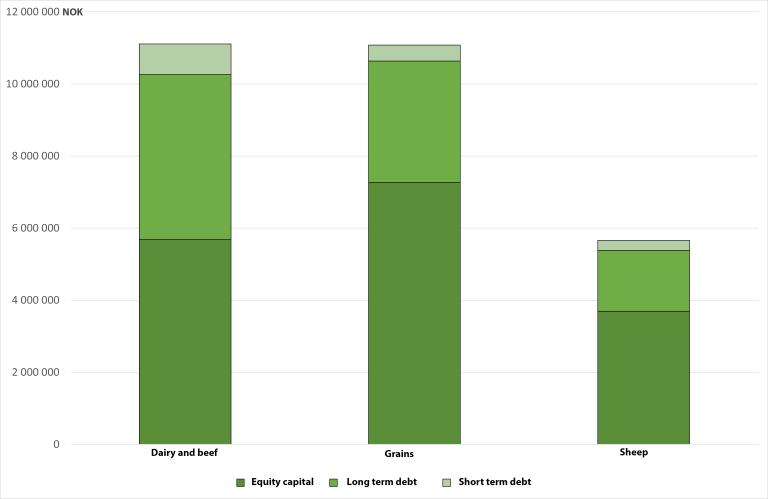
The price of milk also varies based on quality. Different subsidy rates are another factor at play. Higher subsidies are available in parts of the country where achieving profitable operations is more challenging. This is one reason why dairy producers in Northern Norway fare comparatively well economically.
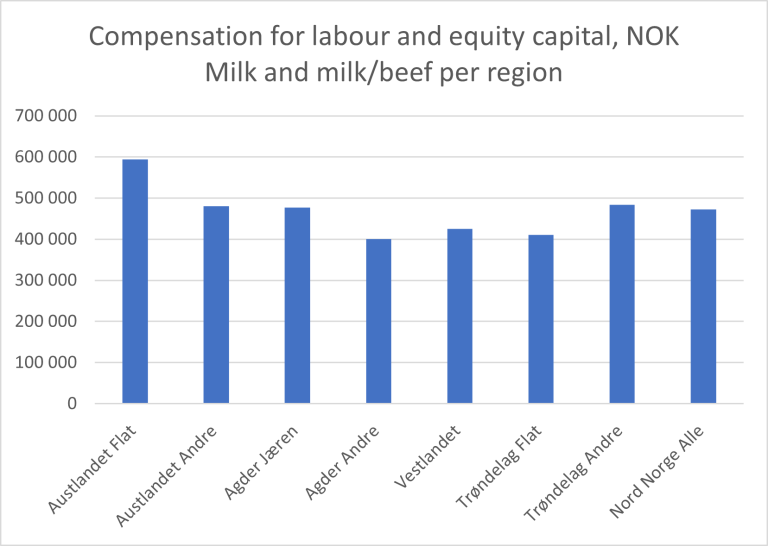
Low income from sheep farming
The average income for sheep farmers has remained low for a long time, but there are significant differences from farm to farm. Similar to grain production, many small-scale sheep producers allocate only a small proportion of their working time to sheep farming. Many have full-time jobs alongside farming. As for the above graphs, all incomes are converted to full-time equivalents for comparison.
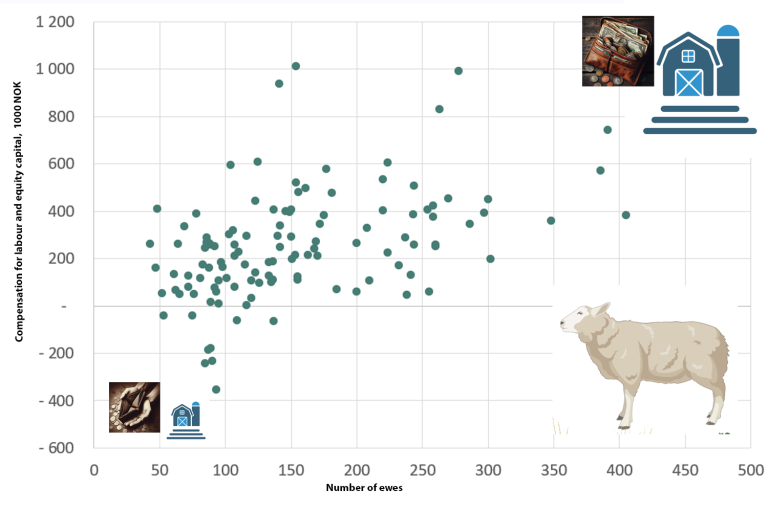
On average, farms with more sheep tend to earn more than those with fewer sheep. However, factors mentioned earlier for grain and milk production also come into play. Geography matters in all agricultural productions. Combination farms that include sheep often perform better than pure sheep farms. If sheep farming occurs in a grain district, the grain income contributes positively during years with good grain yields. Additionally, sheep farmers receive better payment if they deliver meat that meets specific quality requirements.
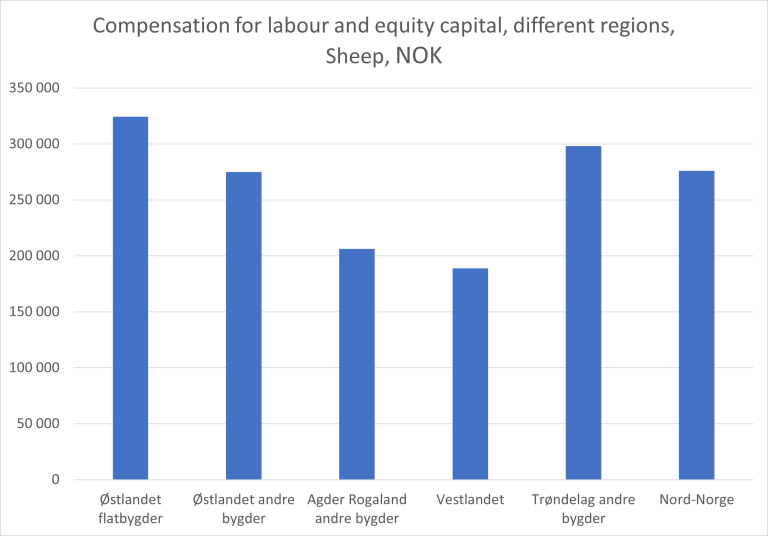
Sheep farming with a small or moderate number of animals can relatively well be combined with other work. Because it’s often possible to start with small investments, it’s a cost-effective way to fulfill the legislated obligation of all owners of agricultural land to keep agricultural land in production and maintain the farm. The other option is to lease it to other farmers.
What do the numbers behind the numbers reveal?
If we revisit the question posed at the beginning of the article, we now have some more insight. We know that many farmers in Norway are part-time farmers who derive only a small portion of their income from agriculture. Nevertheless, many farmers believe that it should be possible to earn a decent income from food production in Norway, and that this income must be substantial enough to allow for investments.
The figures from the farm surveys reveal that many dairy and sheep farms had estimated full-time equivalent incomes ranging from 200,000 to 400,000 NOK in 2022. The average income for other comparable societal groups is 657,000 NOK. Simultaneously, there were many farmers across all production types who fared well financially. Particularly in grain production, there are significant variations from year to year.
Ultimately, we recognize that an agricultural enterprise is complex and multifaceted. Factors such as geography, subsidy rates, investments, the farmer’s choices, and the farm’s size contribute to the wide income disparities.
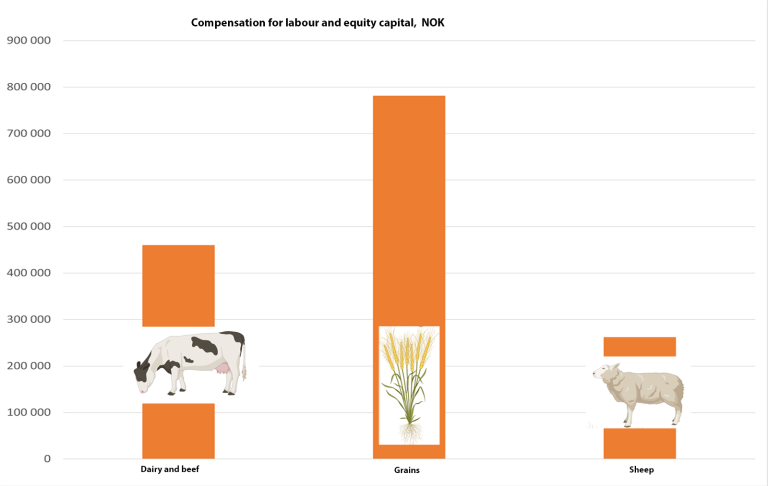
In the end, it’s up to everyone to draw their own conclusion about the significance of Norwegian food production and farmer income. There are many complex questions with various answers. Do we want food production throughout the entire country? How much of the food we consume should be produced in Norway, and how can we achieve the goals for Norwegian food production? These are political questions that the Norwegian Parliament must decide. We hope that the numbers presented in this article have provided you with a better foundation for forming your own opinion.
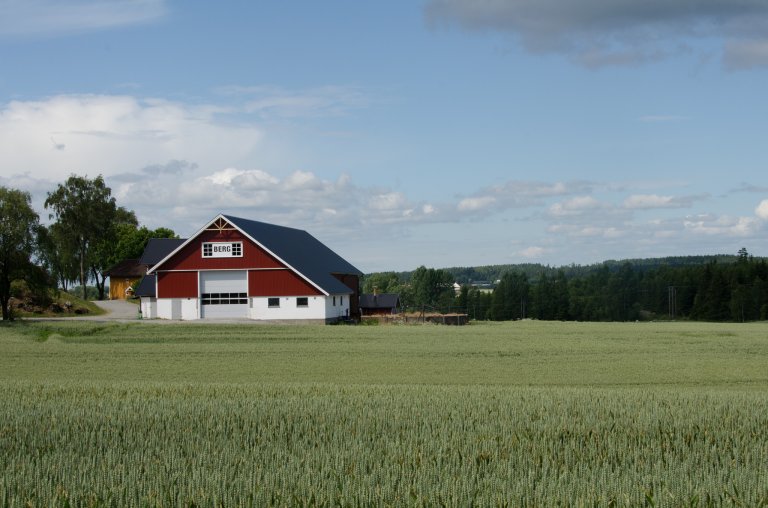
Additional facts:
In this article, we have chosen not to use much space to define the various terms precisely. However, here are some detailed explanations. In short, “total income” is the sum of wages, benefits, business income, and returns on capital investments, such as stocks. Business income from agriculture refers to income from agricultural production minus operating costs. When the farmer’s percentage of income from agriculture is mentioned, it refers to taxable agricultural income as a percentage of taxable total income from tax records. The figures from Statistics Norway (SSB) show annual income from agriculture without converting it to full-time equivalents. This means that if a farmer has worked 500 hours and has an annual income from agriculture of 50,000 NOK, 50,000 NOK is reported in the statistics.
In farm surveys from the Norwegian Institute of Bioeconomy (NIBIO), the term “compensation for labour and equity capital” is used for agricultural income. This includes operating surplus plus costs for hired labour minus the agricultural share of expenses for interest and annuities. A full-time equivalent is calculated as 1845 hours. The figures from the farm surveys used in this article have been converted to full-time equivalent income.
Contacts

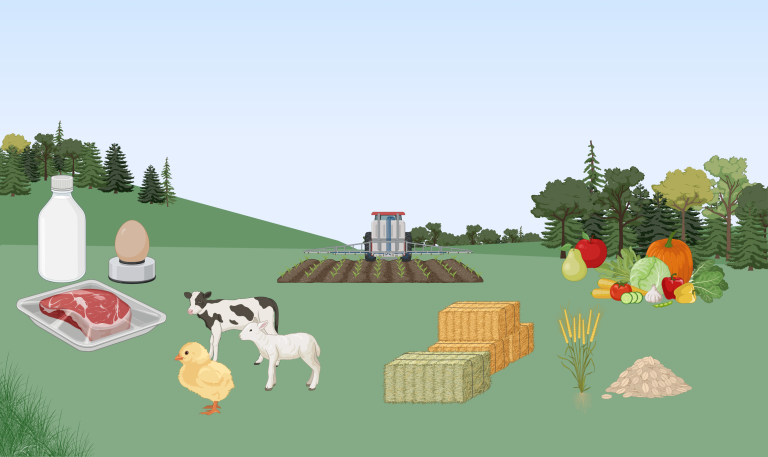
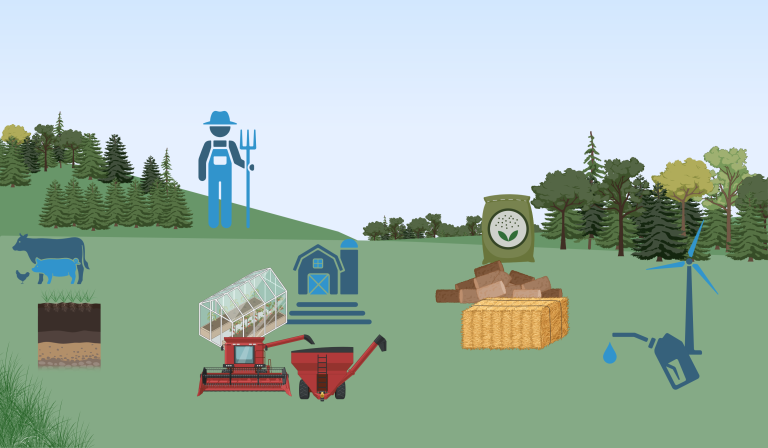
Contacts


